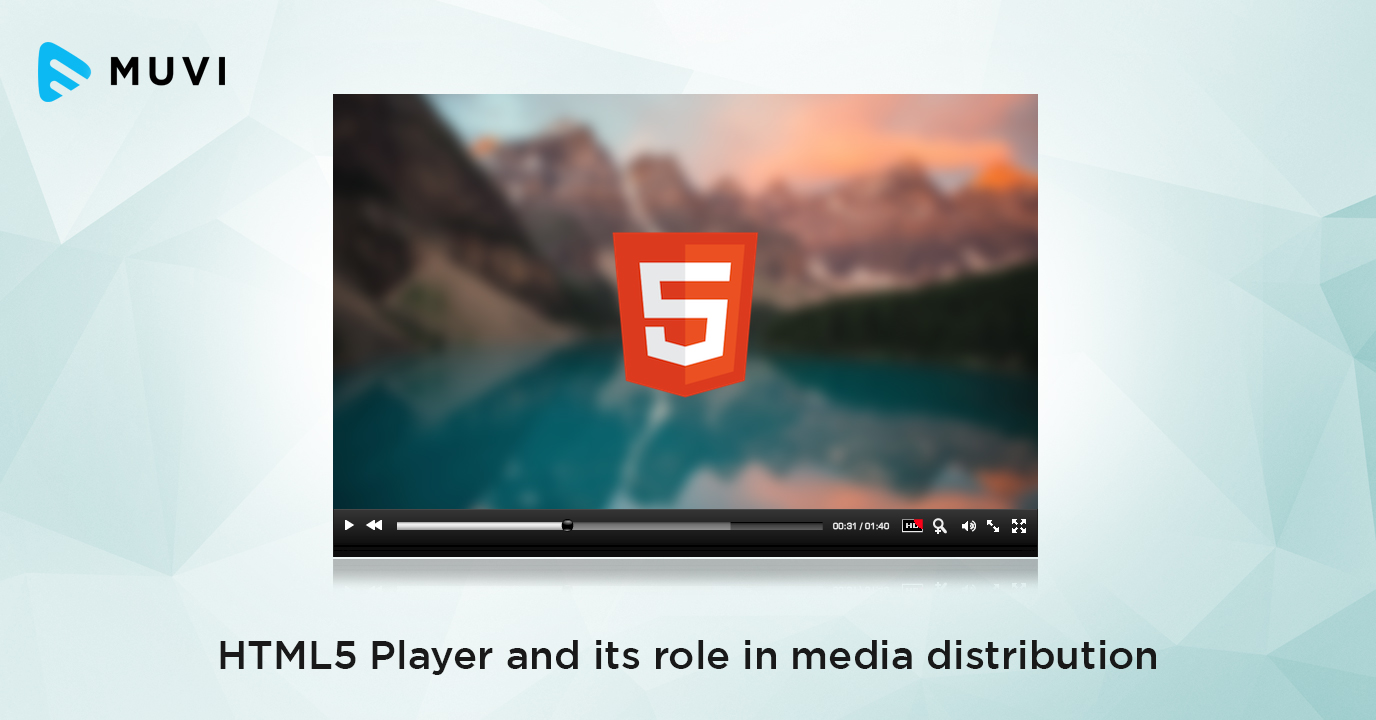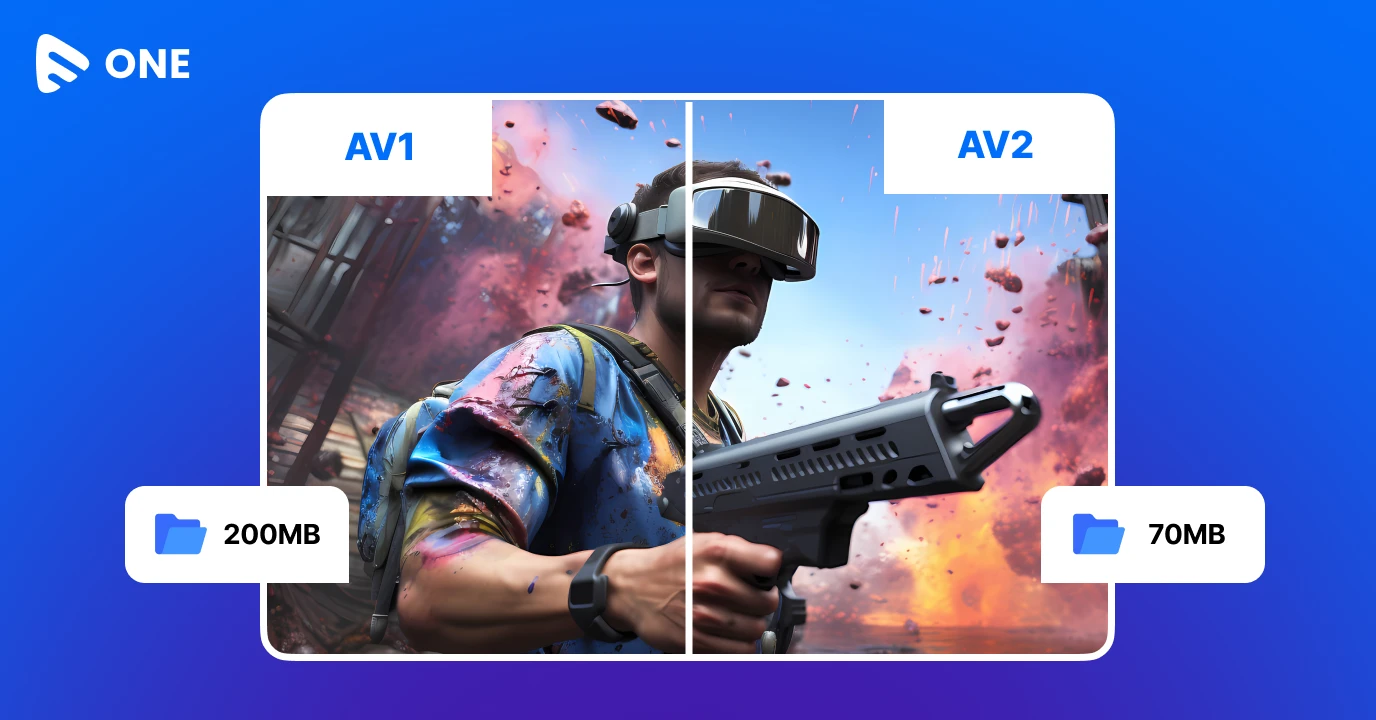Written by: Roshan Dwivedi
Nowadays almost every business relies on video content to market their product or services. A video player can only be called a good one if it has features such as live streaming support, responsive platform, reporting and analytics, ad blocking facility, customization, content management such as sharing, publishing, etc.
Having said that, one must note that it’s not possible for everyone to opt for an enterprise level platform.
An HTML (Hyper Text Markup Language) player, in layman’s language, is a tool that allows playing videos in HTML protocol. In the absence of a standard way to include video in an HTML page, video on the Web has been mostly the prerogative of browser-specific implementations or third-party plugins such as the VLC plugin, Apple QuickTime or Adobe Flash Player. These plug-ins were activated through the use of the <object> tag in HTML.
[ Muvi supports the best quality video content. Build on Muvi and create the best online streaming platform that supports both live and on-demand content. ]
However, this process has its share of drawbacks as well. Scalable Video Graphics could not be used to apply masks and filters on the video. In other words, visual effects could not be added to the video using regular Web technologies.
Advent of HTML5
The <video> tag introduced by HTML5 eased these problems. Since video became a regular tag such as <p> or <div>, it is directly integrated within the rest of the web page. The HTML5 specification defines a standard API to access and control the video from JavaScript. The new API offers an array of possibilities in terms of the user interface considering everything may be done through regular HTML, SVG, CSS, and Javascript.
The best thing about HTML5 protocol is it does not restrict the list of video formats and codecs that a browser may support, leaving opportunities for future formats. The <video> tag features a fallback mechanism whereby alternative “sources” can be specified, each using a different format or codec. If the web browser does not support the first format, it will try using the second one, then the third one, and so on.
The popularity and the credibility of the HTML Player 5 can be imagined from the fact that even YouTube has dumped Adobe Flash to adopt HTML5 for streaming.
Advantages of HTML5 Player
According to a report, nearly two-thirds of web video was already encoded for HTML5 in 2010, and one of the biggest benefits for marketers now is that HTML5 has native video support. So it can be directly built into the supporting browsers that allow faster, high-quality videos to be distributed. The embedment of direct video content on a web page has a positive impact on SEO as it is unique, engaging and therefore is included in ‘quality content’ that search engines are looking to send users to.
HTML5 has evolved a lot over time and has become reliable as it can handle various applications based on various mobile devices.
The New Semantics
It includes the introduction of the new tags that have improved the HTML code. A traditional developer who might be using the div tags, but now there’s a whole lot of new semantics that is used in HTML5 development. Few of the new tags are nav, section, article, header, summary, etc.
Data Storage and Offline Access
The biggest worry of a developer is to store user data. HTML5 is equipped with a solution that not only saves the data but also has a higher uploading speed with proper synchronization assured. Another helpful feature is that it is also available in offline mode where the data can be saved in the local database.
Improvised Connectivity
Boosting up of real-time games and chats is also an extensive capability of this language. So improvised communication is guaranteed with a greater connectivity. There is no necessity of any extra plug-in or an application, as it is directly put in the browser for carrying out video conferencing or other connectivity tasks.
So getting the big story short, extensive and frequent use of mobile devices or other smart gadgets have compelled enterprises to have a business website that’s based on the recent features of HTML5.
Role of HTML5 Player in Media Distribution
HTML5 brought revolution by making video and audio first-class citizens on the web by enabling the manipulation of multimedia content using the <audio> and video tags.
Through the help of HTML5, users are now capable of natively streaming video and audio files in a web browser sans plugins which means there are no more risky downloads just to access the content. In addition to that with HTML5, there is no need for any third-party software which not only keeps the connectivity speed steady but also the battery of your laptop or mobile lasts longer.
Another interesting fact about HTML5 is, it has been specifically developed keeping mobile phones in mind. The technology arena is now crowded with smart gadgets with different screen sizes and resolutions. HTML5 permits users to have a stable web experience across all devices. This certainly holds a greater importance now, as search engine giant Google has already confirmed that a major chunk of the global search traffic comes from the mobile phones and not from desktops or laptops. So it’s a wrap on the non-responsive websites and better user experience is of utmost priority.
In addition to this, HTML5 provides better support for superior vector graphics and interactive online features such as drag and drop, file sharing or even online video editing.
How videos are different with HTML5
From a technical outlook, HTML5’s native <video> element will permit a lot of the same features as a typical Flash-based player, but without the burden of an additional plug-in and the enhanced memory use that comes with it. With HTML5 one will be able to create video players with faster loading, complete custom controls, and offer better accessibility. Few advantages of HTML5 online video Player that makes your video stands out are:
- Accessibility – remote upload and download
- Multiple customization options
- Allow or block files’ download by users
- Add or hide playlists and Menus
- Promote your HTML video through numerous channels
- SEO optimized
- Automatic transcoding and files compressing
- Automatic backups and reports
- Full scalability
- Supports all major video formats and browsers
- Pseudo-streaming
Last Word
In summary, HTML5 is the future and online videos will be only extensive from now on. All types of applications are gradually moving away from our system and into the clouds. Ford says, “HTML5 makes it much easier to make robust applications that are delivered over the Web rather than installed on desktop machines.” The shift, soothsayers were speaking of is finally here and it is only to get wider and better.
[ Check out Muvi, if you want to kick start your audio or video streaming service instantly. Sign Up for Free. ]













Add your comment